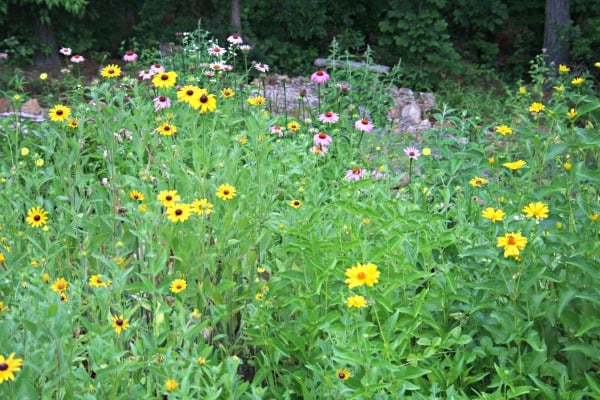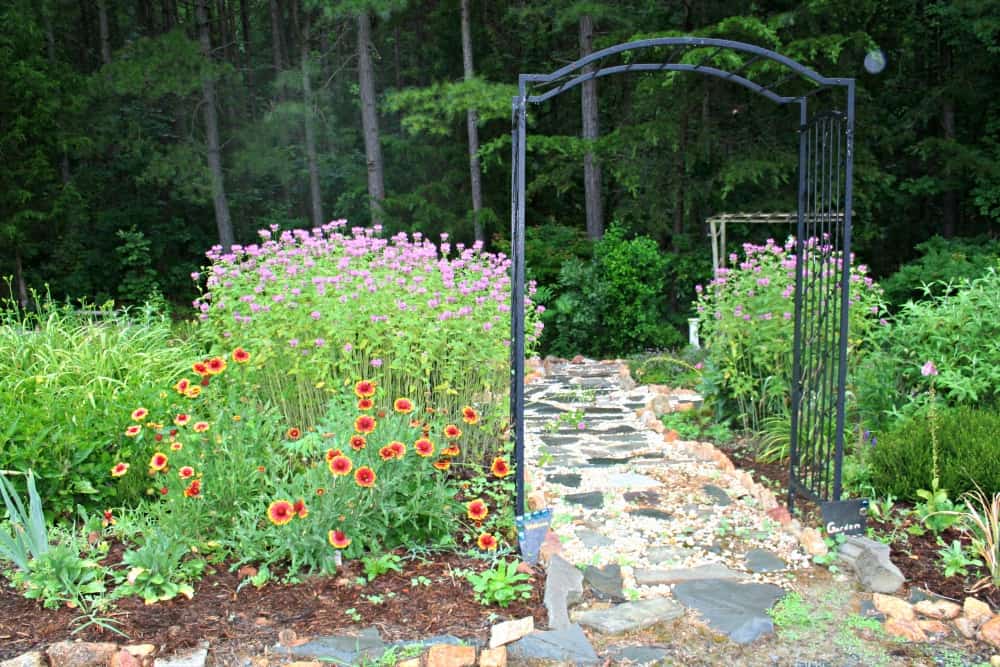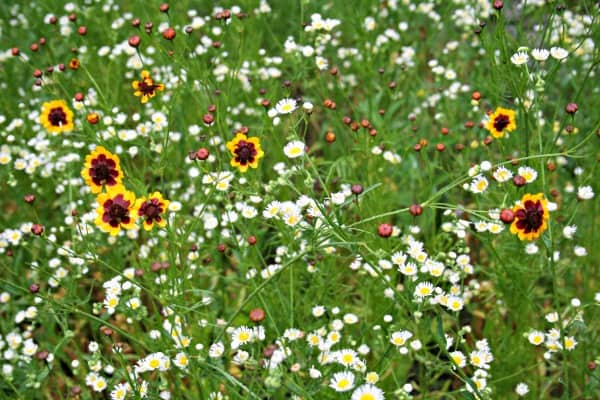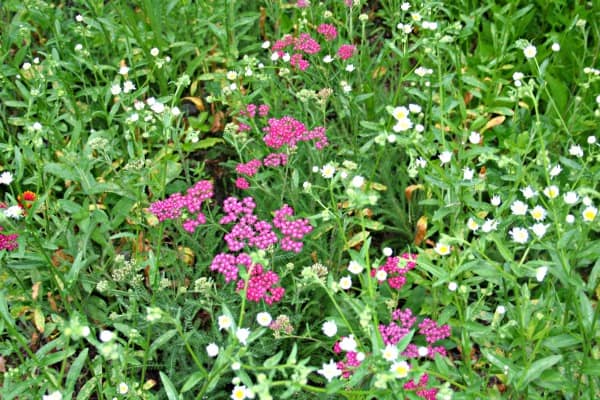There’s a point in June when my perennial garden turns into a big, beautiful meadow garden. The perennial garden is supposed to be a well-tended patchwork of pretty flower beds connected with a meandering gravel and Buckingham slate path. Instead, wide swathes of “weeds” – aka wildflowers – take over, and I couldn’t be happier.
It’s June, and it’s the time of year when my garden turns into a big, beautiful meadow.
And I couldn’t be happier about that.
Natural Garden Design: The Meadow Garden
Natural garden design is the term I use to describe the meadow-like jumble of perennials blooming in my garden at this time of year. The paths and entrance trellis give the garden structure, but the plants have a mind of their own.
I love a jumble of what my husband calls “weedy” plants, those plants that might be mistaken for weeds or wildflowers, depending on your point of view.
There’s coreopsis, which I planted from seeds, and flea bane, a ‘weed’ or wildflower that most people pull from the garden but I leave for its pretty little flowers. It grows wild along the country lanes and roads here in south central Virginia.
And then there’s yarrow (Achillea) which also grows alongside the fleabane
Daisies, Black-Eyed Susan (Rudbeckia), and Purple Coneflower (Echinacea purpurea) also grow in masses and drifts on the slope of the perennial garden:

Yellow daisies, black-eyed Susans, and purple coneflower on the slope. You can see the meditation bench in the back.
Although the garden design has long since been absorbed by the glorious mess of perennials, there are a few common elements that I feel ties the look together.
These include:
- Daisy-like flower forms: I seem to love daisies. I have white Montauk daisies that bloom in the fall and purple asters for fall, yellow daisies and black-eyed Susans for summer, and a profusion of Echinacea of all types. Although not ‘daisies’, Echinacea has a single center surrounded by petals.
- Colors in the summer include lots of yellow and orange, as well as purples. The predominant color scheme in the spring is pink and purple, then the pink fades out and the yellow transitions in.
- I try, although I often fail, to plant symmetrically in the garden. I flanked the path entrance with purple bee balm (Monarda) and iris for symmetry, as well as the coneflowers. The design is really loose and I consider design my weakness so it’s all a work in progress.
- Most of the plants, although not all, are native perennials. This helps the local pollinators such as bees and butterflies.
- I leave weeds if they are pretty. This drives my husband nuts, but come on…isn’t the fleabane really pretty with the coreopsis? So what if it’s a weed? It works!
The meadow look isn’t for everyone, but it does cut down on the weeding, and it provides a solid blanket of flowers. The bees and butterflies love it, and the plants’ roots hold the soil in place. I wish I was better at garden design, but for what I’ve done so far, I think it’s come along quite nicely.
Happy gardening. Keep growing!










